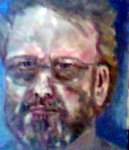How far away from ground level and from today do we need to go in our imagination so that we can understand urban evolution? What details in the puzzle can we discard without loosing the essence of urban phenomena that we are trying to understand? What is the characteristic time of cities? These are among the fundamental questions that I discuss with my students in urban economics.
Generally, it is easier to sink deep into the "technology" of economic reasoning. I find it fun to plow through the logic of maximization to generate rough explanations of crude phenomena. But such exercises, while elegant, leave too much out of the puzzle. The students find it fun to read papers on issues that they did not think economists consider. Such is the case with the new paper by Eid, Overman, Puga and Turner entitled: "Fat City: Questioning the Relationship Between Urban Sprawl and Obesity".
This year I am spending much less time on working through the typical topics in urban economic. This is despite the fact that the course is an introductory urban economics course. I decided to spend part of the semester on non-linear urban dynamics. The students seem to be fascinated by my presentation of cellular automaton simulation models and playing with them. They enjoy attempts to identify urban fractals. I insist on looking at detailed data sets and in comparing the results of the simulations to the data and to economic intuition.
I am wondering whether anyone else is doing something similar.
Friday, December 22, 2006
Subscribe to:
Post Comments (Atom)


No comments:
Post a Comment